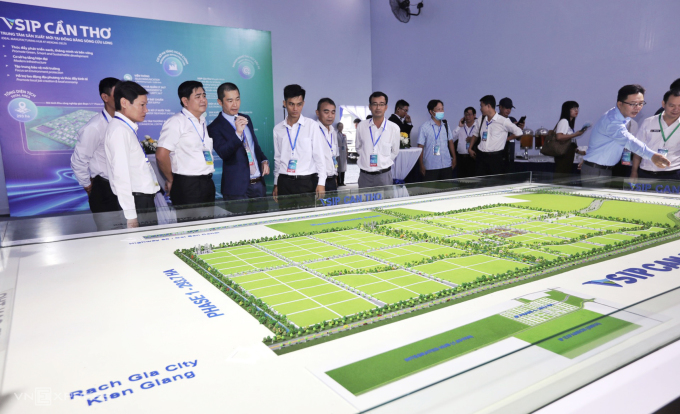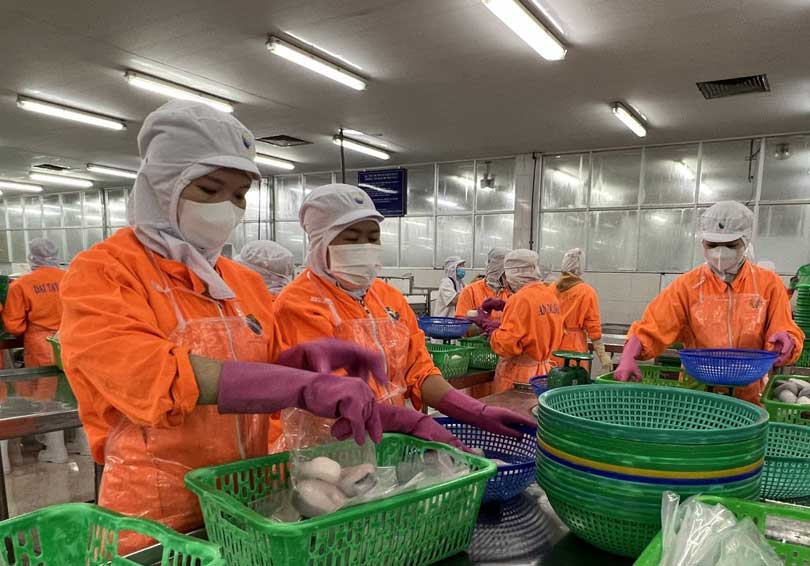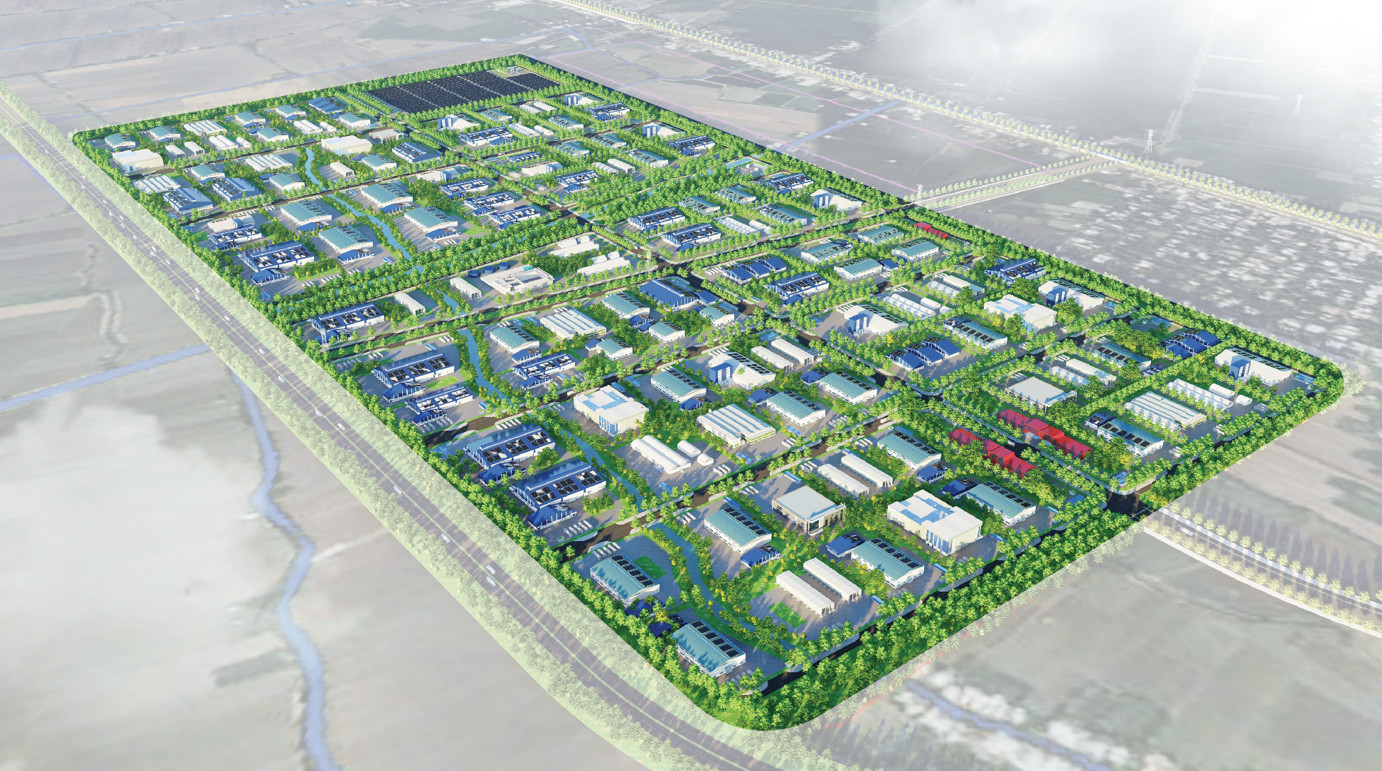The Mark of 20 Years of Industrial Development in Can Tho
From having only a few dozen businesses operating in industrial zones, Can Tho now has an occupancy rate of nearly 70%, with a production value of nearly 30,000 trillion Vietnamese Dong.
Can Tho City, the only centrally-governed city in the Mekong Delta, was separated from Hau Giang province in 2004. After 20 years of development, Can Tho has become one of the leading economic areas in the region. The industrial sector contributes over 31% to the GDP, according to data from 2022.
The Industrial Center of the Western Region
Since being recognized as a centrally-governed city, Can Tho has focused on the transition of its economy from agriculture to industry and services. In 2004, the total value of industrial production in the area was over 11,000 trillion Vietnamese Dong. This number has almost tripled over the past 20 years. The average growth rate of the industrial sector from 2004 to 2007 was 24.27%, higher than the regional average. From 2007 to 2010, the growth rate was 19.31% per year. In the years 2011-2015, it reached 6.32%, and in 2016-2020, it grew by 6.07%.
The local government has established industrial zones to attract investment projects and create employment opportunities for the local residents. Currently, the city has 6 industrial zones, including Thot Not (600 hectares), Tra Noc 1 (100 hectares), Hung Phu 1 (262 hectares), with an occupancy rate of 68%. These industrial zones have attracted 256 investment projects, leasing 393.5 hectares of industrial land, with a total registered investment of 1,656 billion USD. As a result, they have created job opportunities for 43,177 workers. In the first 7 months of this year, the 6 industrial zones generated a revenue of 1.3 billion USD.
In addition to the industrial zones, the city also has many industrial clusters and production facilities that provide employment for tens of thousands of workers.

The industrial sector in Can Tho is mainly concentrated in the districts of Binh Thuy, Cai Rang, and O Mon. These areas are strategic gateways with great advantages in connectivity with neighboring provinces. The key industries in the region include food and beverage processing, seafood export, animal feed, rice milling, woodworking, paper production, textile and garment manufacturing, and consumer goods production.
The growth of the industrial sector in recent years is due to the attractiveness of Can Tho City as a young and dynamic urban center. Many infrastructure projects have been invested in to improve connectivity with neighboring provinces.
In the future, the city’s transportation network is expected to expand and upgrade with 3 expressways, 6 national highways, one interprovincial route, 20 provincial routes, as well as the main urban axis and ring road. In addition, the city has a waterway transportation network that can accommodate ships up to 20,000 tons, and an international airport. These are prerequisites for further industrial development.

However, the industrial sector in the Western region still faces many challenges and has not fully tapped its potential. Most businesses are small and medium-sized. The infrastructure is not yet synchronized. The FDI inflow into Can Tho is still lower compared to other centrally-governed cities. The city has 29 FDI projects as of September, while Da Nang has over 100 and Hai Phong has over 700. Hanoi and Ho Chi Minh City always rank high in terms of attracting FDI.
Expectations for Breakthroughs in the Future
In September 2023, VSIP (Vietnam-Singapore Industrial Park) broke ground for the VSIP Can Tho Industrial Park project in Vinh Thanh commune, Vinh Thanh district, Can Tho City. The project has a total area of 900 hectares, with the first phase covering 293.7 hectares and a total investment of 3,718 billion Vietnamese Dong. This is the largest industrial park in the Mekong Delta (excluding Long An province) and is expected to drive the growth of Can Tho City.
VSIP Can Tho aims to attract industries such as electronics, vehicle manufacturing and assembly, mechanical production, industrial support products, textiles, food and beverage, and logistics. The completed infrastructure will include telecommunications, 24/7 security and management, a water supply capacity of 45,000 cubic meters per day, wastewater treatment systems, and a commercial center. Nine companies including Daewon Cantavil, Dai Viet, East Rise, Geppexim, Bánh Pháp Plant-Based, Sembcorp, Transimex, Yong Long, and Yong Mei have signed memorandums of cooperation. When completed, this industrial park is expected to attract 3.5 billion USD of FDI, create jobs for 100,000 people, double the current workforce in the existing 6 industrial zones.

Mr. Koh Chiap Khiong, CEO of Sembcorp Industries in Singapore and Southeast Asia, stated that VSIP aims to leverage Can Tho’s strengths to become a processing and distribution center for food. The company will establish a supply chain network from the center to the port with additional facilities to support and enhance the tenant’s supply chain needs. Prime Minister Pham Minh Chinh expects VSIP to develop into a four-in-one industrial park – integrating an industrial center, a high-tech center, a service center, and a residential area.
The leaders of the Ministry of Planning and Investment believe that VSIP will provide momentum for the socio-economic development of Can Tho, as well as the Long Xuyen Quadrilateral. Adjacent to three provinces: Dong Thap, An Giang, and Hau Giang, VSIP Can Tho is easily connected to the port system, airports, and other facilities of the city. Not only industry, but trade and services will also benefit, creating an important boost for the transformation and development of Can Tho in line with its potential and its position as the center of the Mekong Delta.
The establishment of VSIP Can Tho marks an important milestone in the process of transforming the Western region into an industrial center. The city aims to focus on developing processing and preservation of seafood and high-tech agricultural products by 2025. The city plans to invest 75,000 – 80,000 billion Vietnamese Dong in this strategy, of which the budget is 13,500 – 17,600 billion Vietnamese Dong, and the rest will come from enterprises, credit, and FDI.
In the city’s development plan until 2030, recently announced on October 20, Can Tho will have three economic zones. Among them, part of O Mon and Thot Not districts, as well as part of Thoi Lai, Co Do, and Vinh Thanh districts, will become the new economic development powerhouse in the north, envisioned as a high-class ecological urban area, an industrial city, a commercial port, and a logistics center. By 2030, the southwestern region is expected to have 10 industrial zones covering an area of over 2,300 hectares.
Article Source: Business Today
